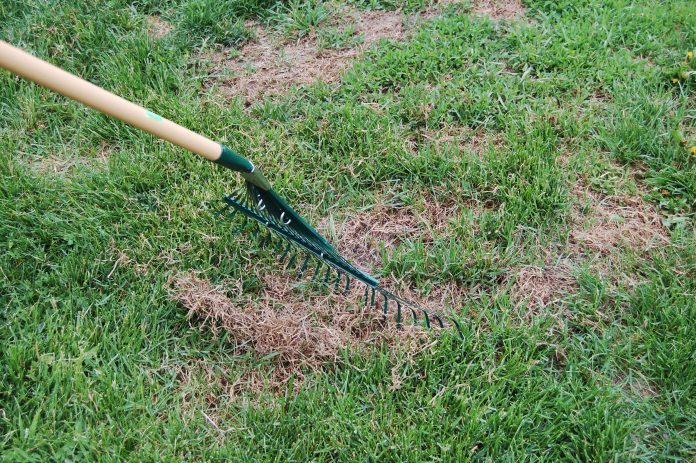
We get a lot of questions about lawns. Lawns are, after all, a point of pride for many homeowners.
Lawns are also subject to scrutiny from environmentalists who point out that a lawn does not support much in the way of biodiversity, and they can be demanding of water, especially for people who insist on keeping their lawn lush and green in the heat of summer. Fair points.
We take the middle-ground on the subject. Certainly, there are higher uses for a property carpeted in lawn from end to end, but sod can also serve as a useful filler and few ground covers stand up better to high traffic areas. We would certainly not recommend paving as an alternative.
Here are recommendations for the best-looking lawn this spring plus some alternatives to a lawn:
Rake using a soft rake, get air flowing through grass blades, to minimize snow mould and powdery mildew while accelerating your green up. Do not work too hard at this, you are not dethatching your lawn.
Aerate high traffic areas which are compacted from extensive foot traffic. Make sure you pull cores out of the ground when aerating, rather than using the spike method which simply compacts the soil in the wrong direction.
Fertilize using a slow-release spring fertilizer blend. Look for a slow-release ingredient that feeds your lawn over many weeks.
Overseed using a 3 cm layer of lawn soil or triple mix and a high-quality grass seed mix. Thickening your lawn in the fall and spring is your best defense against weed pressure throughout the season.
If you’re among the growing number of people who are looking to replace their lawn, here are our favourite ideas:
Grow food in a raised bed constructed atop your previous lawn. Build an open-bottom raised bed in a sunny part of your yard with a 10-to-20-page layer of newspaper at the bottom to smother the grass. Then back-fill with at least 30 cm of the best quality soil you can afford with a generous quantity of compost mixed with about 30% sand and plant your veggie garden!
Establish a “living carpet” of low-growing perennials. This works best in areas of lower foot traffic and be sure to avoid invasive plants such as Periwinkle (Vinca minor), English Ivy (Hedera helix), and Goutweed (Aegopodium podagraria). Wild Strawberry (Fragaria virginiana) is a native that grows well amongst existing lawns, will tolerate light foot traffic and shade, produces flowers for pollinators in the spring and tiny, sweet strawberries later in the season. Blue Violet (Viola sororia) is a fast-growing groundcover that pairs well with Wild Strawberry and is a host plant to Fritillary butterflies. Pennsylvania Sedge (Carex pensylvanica) is another native which tolerates moderate foot traffic. Unlike typical turfgrasses, Pennsylvania Sedge is an important host plant for some butterfly species.
Go the Easy-Route, with an “Eco-Mix” from Ontario Seed Company (or the like). Consider the Flowering Ecological Seed Mixture (a blend of wildflowers and fescues), or the “Low Maintenance” mix. Start your seed as you would grass seed, overseeding a typical lawn but with a “wilder look”. While your neighbours might need some educating, the results require less water and fertilizer (if any) after it is established, while supporting an abundance of wildlife.
Go wild if you don’t need a place to run around or host picnics, look at your lawn area as a blank canvas for a whole new garden. Homegrown National Park is a movement started in the US by entomologist and author Douglas Tallamy to convert ½ of privately-owned lawns (20 million acres) to native plantings, creating much needed habitat for our biodiversity crisis. Learn more at https://homegrownnationalpark.org/

